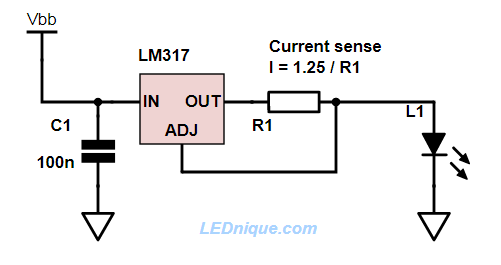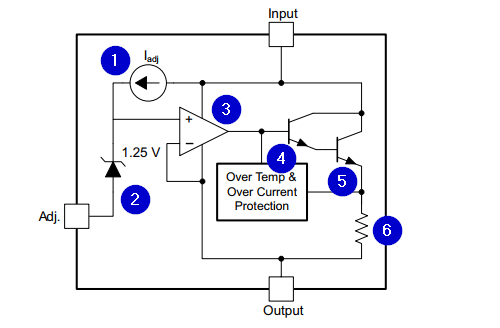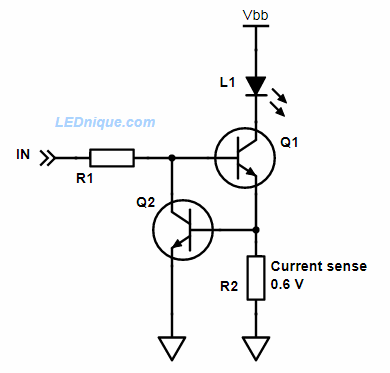The AL5809 series of devices are a very convenient two-terminal constant current driver and ideal for many LED applications.

The AL5809 turns on when the voltage between IN and OUT swings from 2.5V up to 60V enabling it drive long LED chains. The floating ground, 60V Voltage rating between Input and Output pins designed to withstand the high peak voltage incurred in offline applications.
15mA, 20mA, 25mA, 30mA, 40mA, 50mA, 60mA, 90mA,
100mA, 120mA, and 150mA versions are available in PowerDI123 package.

While the device looks rather like a diode, the internals are far more complex.
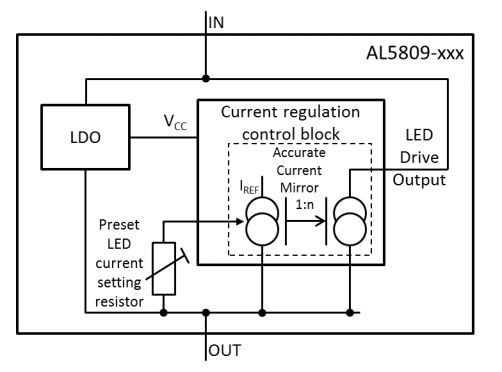
A low drop-out (LDO) voltage regulator provides power for the internal circuitry. This will determine the minimum operating voltage of the device which is 2.5 V. This means that the minimum supply voltage required is the VF of the diodes + 2.5 V. ( VIN(min) = VLED_CHAIN + 2.5 V.) A fixed preset LED current setting resistor sets the reference current of the Current regulation block. The LED current setting resistor varies with each variant of the AL5809. An accurate current mirror within the Current regulation control block increases the reference current to the preset LED current of the AL5809.
Power considerations
While the devices have a wide operating voltage care must be taken to avoid excess power dissipation. Maximum power is given in the Package Thermal Data table.
Table 1. Maximum power dissipation.
| Package | PDIS |
| PowerDI123 | 0.68 W |
| Power DI123 on GETEK PCB | 1.24 W |
| SOD-123 | 0.36 W |
Read the datasheet notes carefully to understand how these specifications were developed and, in particular, the PCB type, vias and pad size.
If we take the 0.68 W specification of the first line of the power table we can calculate the maximum voltage for each AL5809 variation.
Table 2. VMAX across the device as a function of current assuming 0.68 W maximum dissipation.
| Current | VMAX |
| 15 mA | 45 V |
| 20 mA | 34 V |
| 25 mA | 27 V |
| 50 mA | 13.6 V |
| 100 mA | 6.8 V |
| 150 mA | 4.5 V |
Devices may be connected in parallel to increase current or power.
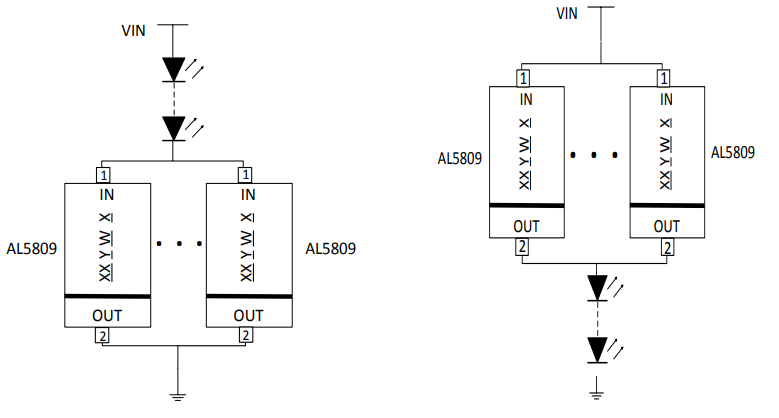
PWM dimming
PWM can be used with these devices subject to the tON_MIN and tOFF_MIN of 0.5 ms. At 100 Hz this would limit PWM control to 5 to 95%.


